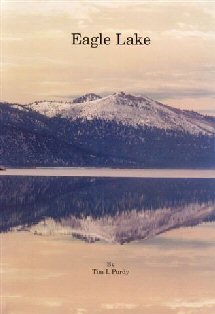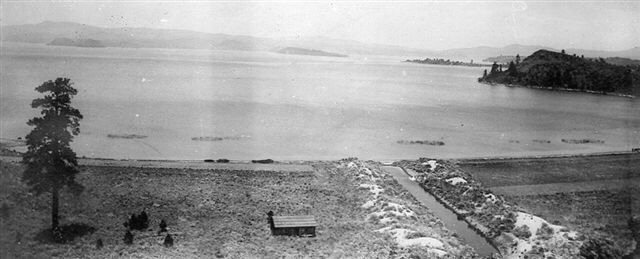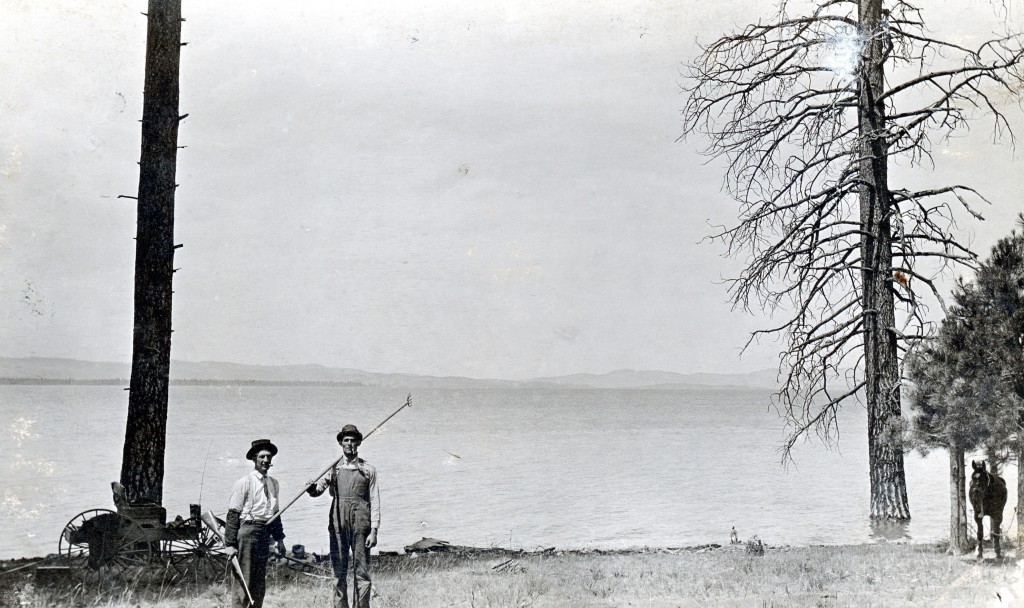 Eagle Lake
Eagle Lake
By Tim I. Purdy
6×9; 184 pages, illustrated, index, hardcover,
ISBN: 0938373-21-8,
Price $24.95
Eagle Lake is California’s second largest natural lake. The first segment of the book focuses on the natural history. A wide variety of issues are examined ranging from dramatic changes in the lake’s level, earthquakes, forest fires, grasshopper invasions, and of course its fishery. Not only is the story told how the famed Eagle Lake trout was saved from extinction, but the tale of the successful introduction of bass during the early 1900s.
The second segment begins with A.W. Blair’s 1872 grandiose scheme to tap Eagle Lake to irrigate the sagebrush lands of Honey Lake Valley. While Blair never did carry out his proposal, he opened the door for others. In 1914, Malvena Gallatin, invited, Leon Bly, a civil engineer to her summer home at Eagle Lake to examine the feasibility of a tunnel. In 1923, Bly’s tunnel was completed and would be the center of many controversies over the next six decades, until it was permanently sealed in 1986.

The third segment deals with the settlement and development of the Eagle Lake basin. Included is the Papoose Meadows Massacre and that of the various settlers such as Dow, Spalding, Troxel, and Stone to name a few. Then, of course, is the story about the Gallatins and their legacy at the lake, to how the lake has developed to its present state.
While the above is a brief description, there are so many interesting facets explored in detail in the book. Take for instance the Gallatin legacy at the lake. In 1886, Albert Gallatin, who had many business interests, including a large sheep operation in Lassen and Tehama Counties, began acquiring land around Eagle Lake. In the following two years Gallatin purchased 4,962 acres in the Eagle Lake basin for $9070. By 1924, Gallatin’s widow, Malvena owned over 40 miles of Eagle Lake shoreline.

In 1913, Malvena Gallatin built the first summer home at Eagle Lake and off and on was a frequent visitor of Eagle Lake. Malvena could have closed off access to the lake, but did not and allowed the public to use the beach for camping, swimming, boating and fishing. In 1946, she sold all of her Eagle Lake holdings, except for a 1.96 acre parcel that the Gallatin House was located on, to the Lassen Lumber & Box Company. That summer the lumber company exchanged the property with the Lassen National Forest for timber property elsewhere, thereby the public would have continued access to the lake.